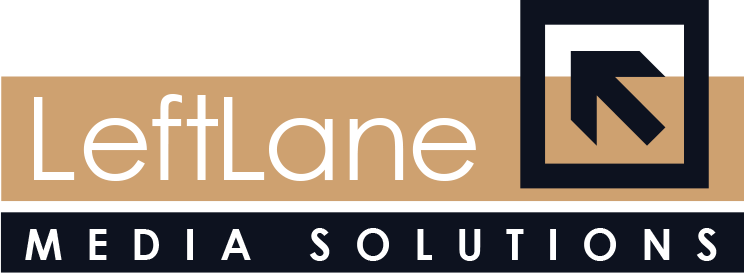Website design combines art and technology to create a website that is functional and pleasant looking to its visitors.
As a beginner, creating a website can get overwhelming because of the many factors that you should consider, like UX/UI, patterns and fonts to use, color hierarchy/psychology, and other practices.
In this article, we’ll present six web design ideas that are ideal for beginner web designers.
Benefits of a High-Quality Website Design
These are the main benefits of investing in a high-quality web design:
- Boosts customer satisfaction and engagement
- Reduces marketing costs
- Improves brand credibility
- Provides valuable customer insights
- Leads to long-term cost savings

The Basics of Web Design
The basics of web design cover a lot of skills and techniques. For this section, we’ll explore the basic components of web design, from principles to user interface and user experience.
Basic Principles of Design
The effectiveness of a great website sometimes depends on its design. You must understand and apply the fundamental techniques of design principles.
These are the four main principles that you should always check:
- Alignment: Creates a sharper, more ordered design
- Contrast: Helps to emphasize and highlight key areas of the website
- Visual hierarchy: Guides the viewer’s eye through the design
- Balance: Provides stability and structure by distributing elements evenly
User Interface (UI)
The user interface (UI) is important for designing attractive, functional, and simple-to-navigate websites. It anticipates users’ needs by integrating intuitive and readily accessible features.
Effective UI design ensures that every element, from buttons to forms, is placed thoughtfully to facilitate user interaction and enhance overall site usability.
User Experience (UX)
User experience (UX) pertains to the overall feel and effectiveness of user interactions with a website. It aims to provide a flawless and satisfying experience by ensuring positive and fulfilling interactions.
A good UX design is also important as it directly influences customer satisfaction, loyalty, and conversion rates, which are key to business success.

6 Fundamental Website Design Ideas for Beginners
Follow these six web design ideas when planning or creating your own website:
1. Color Scheme
When selecting a color for your website, you don’t just pick a color that looks good. They have different effects on user perception and usability.
Colors and Emotions
Colors can quickly convey emotions and affect website visitors’ decisions. It is a powerful communication tool that can signal action, influence mood, and even affect physiological reactions.
Color Palette
A color palette influences a website’s aesthetic appeal and users’ emotional responses. Using consistent colors that align with the brand’s identity increases brand recognition.
Strategic color choices can improve readability and usability, guiding users’ attention to important sections and actions on the site.
2. Typography
Typography is also part of web design. It’s about picking nice fonts for interface design. This fundamental factor can help give the audience a better user experience and increase website readability and overall site performance.
The Role of Typography in User Experience
Effective typography enhances how people interact with and understand information. It influences how users process and navigate content and helps them move through the site smoothly and efficiently.
Choosing and Combining Fonts
Selecting the right fonts is key for a professional, readable website. Pick fonts that are easy to read on any device to improve readability whenever the user scrolls through your website or reads content.
You should also choose fonts that match your brand’s image and purpose and ensure that you have the right to use the fonts commercially for licensing purposes.
Typography Best Practices
Following best practices makes your text readable and visually compelling. Use a clear, consistent font size and style to guide readers.
The texts should also be properly scaled across devices, and the number of fonts should always be limited to maintain a clean and balanced look.
3. Layout and Structure
The structure of a website can affect usability and overall user experience. An effective layout organizes information clearly and logically and makes it easy for users to navigate and find what they need.
Common Website Structures
Understanding common website layouts can help in designing more complex sites. The F-layout mimics the natural reading pattern of left to right and top to bottom.
The Z-layout guides the eye along the top, diagonally to the opposite corner, then down. Grid-based layouts create a solid visual and structural balance of design elements.
Designing for Usability and Navigation
Good design promotes usability by making the website as straightforward as possible. This includes ensuring navigation clarity so users always know where they are.
Interactive elements like buttons and links should be easy to see and use. Information should be accessible, easy to find, and understandable.
4. Images and Graphics
Visual elements such as images and graphics can add to the appeal of a website. They help upgrade the look and support the communication of information and values.
Effective Use of Visual Elements
Images and graphics should be used purposefully to support the content and design and be relevant to the accompanying content. High-resolution images make the website look more professional.
Additionally, the images should balance with the content.
Sources for Free and Paid Images and Graphics
There are many resources available to obtain high-quality images for a website. Free websites like Unsplash and Pexels offer a wide selection of high-quality images at no cost.
For more options, paid stock photo websites such as Shutterstock and iStock provide a broader range of images for a fee.
Optimizing Images for Faster Load Times
Optimizing images is important for maintaining fast load times and improving the user experience. It includes using compression tools like Jpeg Organizer or Tiny PNG to reduce file size without losing quality.
You should also choose the appropriate file format, such as JPEG for photos and PNG for graphics with fewer colors.
5. Responsive Design
With a growing variety of devices, responsive design has become essential. It ensures that a website looks good and functions well on all devices, from desktops to smartphones.
Understanding Responsive Design
Responsive design involves creating web pages that adjust to the size of any device. It includes using flexible, fluid grid layouts that adapt to the screen size.
Media queries, a CSS technology, further adapt the layout to the viewing environment that helps secure the images and other media types scale correctly is also important.
Importance of Mobile-Friendly Layouts
With mobile traffic accounting for approximately half of all web traffic globally, having a mobile-friendly website is important.
It improves the experience for mobile users and search engine rankings (as mobile-friendliness is a ranking factor) and increases the likelihood of conversions from mobile users.
Techniques for Creating Responsive Designs
Effective techniques for creating responsive designs include using frameworks like Bootstrap, as well as modern layout methods like CSS Flexbox and Grid.
Regularly testing the website design on various devices and tweaking it as needed can help ensure optimal performance across all screen sizes and types of devices.
6. User Interaction and Engagement
Engaging users and encouraging interaction on a website can affect its success. Interactive elements should be intuitive and provide value to the user.
Improving User Engagement Through Interactive Elements
Interactive features can greatly affect the engagement levels of a website.
These include feedback forms that allow users to communicate with site administrators, social sharing buttons that make it easy for users to share content, and animations or hover effects.
Examples of Interactive Features for Beginners
Some simple yet effective interactive features for beginners include a call-to-action button for a landing page that encourages users to take specific actions, parallax scrolling that creates a dynamic experience, and content sliders that allow for the display of multiple pieces of content.
Creating Call to Action that Convert
A web page with an effective call to action (CTA) is key to converting visitors into customers. The CTAs should be visible and easy to find, with a clear and concise message. You can also try to offer an incentive or something of value to encourage users to action.
However, these web design tips can consume your time. If you want to focus on running and growing your business, make sure to work with a trusted web design agency to make the process easier, especially if you have customized website ideas.
Web Design With LeftLane Media
If you have a project and want to get started with LeftLane Media, fill out their quote form.
You can also contact them by dialing 714-676-9253 or visiting their office located at 3040 Saturn St #205, Brea, CA 92821.
FAQs About Website Design Ideas for Beginners
Where can I find web design inspiration for my new website idea?
You can draw inspiration from design-focused websites like Behance and Dribbble, which showcase a wide range of creative works that can spark unique ideas for your project.
How can I make an ecommerce website design to attract more customers?
To improve customers’ shopping experience, focus on creating a user-friendly interface, checking whether your product images are high-quality, and using color schemes that show trust and professionalism.
What are some key elements I should include in my portfolio website to stand out to potential employers?
Highlight your best work with high-resolution images, provide concise descriptions of your projects, and make sure that your contact information is easy to find to make a strong impression.
